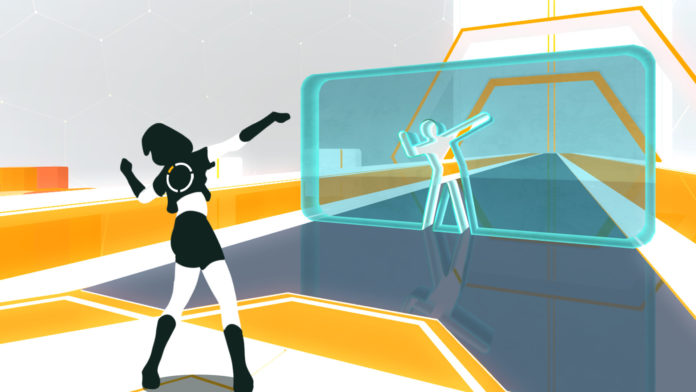Hole in the Wall was an American television show that originally aired from 2008 to 2009. The show was an adaptation of the Japanese game Nōkabe (脳カベ), meaning “Brain Wall” [1] where players had to contort their bodies to fit through cutouts in a large wall moving towards them. If unable to do so correctly, and in the amount of time allotted, they would be pushed off and eliminated.
This is Ohshape, except to music in virtual reality rhythm game form, and if you hit a wall you don’t get eliminated… at least not immediately.
Preparation
OhShape is a fitness-focused rhythm game with the potential for a ton of movement and sweating. You’re going to be moving your entire body so make sure your play space is set up correctly and clear out any clutter, furniture, people, or pets before getting started. OhShape is best enjoyed tetherless and with ample space, so for those of you with wireless setups, rejoice! It’s also releasing for Quest today, February 20th, and is sure to be a solid fitness pickup for all you on-the-go VR gamers. I always start my VR sessions with a freshly laundered VR Cover and lots of water nearby.
Feel free to do some light dynamic stretches before getting in the headset, which is something I normally do before an active game session.
Intensity – 8/10
In order to get as much data as possible while playing, I track my workouts in VR in a couple of different ways. I wore my Samsung Galaxy Active watch which monitors my heart rate via my wrist along with the motions of my arms. I also always use the YUR desktop app to track my calories burnt every time I venture into the virtual world no matter what I’m playing.

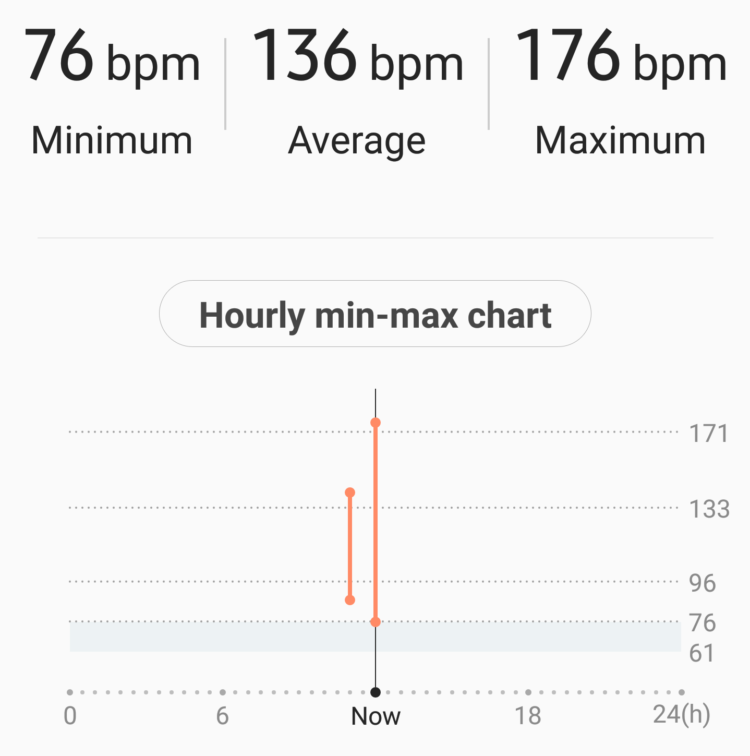
OhShape vs Pistol Whip
Calories burned: 256 vs 209
Calories per minute: 7.5 vs 6.5
Average heart rate: 136 vs 136
Max heart rate: 176 vs 179
Active Minutes: 34 (20 mins Cardio 11 mins Peak) vs 35 (17 mins Cardio 5 mins Peak) vs
OhShape shines as a cardio title. The later OST difficulties plus community content make players move, duck, and dodge ridiculously (and sometimes impossibly) fast and far. By the end of my first thirty-minute session I was sweaty and out of breath.
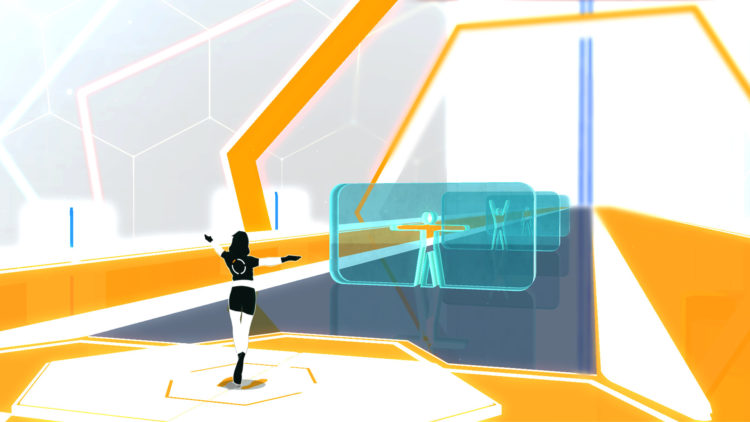
Arms – 7/10
Poses that require you to hold your arms out to the sides or above your head (yes YMCA has been SO done) are common. I did find I was often expected to cross my arms above my head at around wrist level fairly quickly, making the potential for clapping frighteningly high. While clapping your hands while dancing in real life is fun, it’s fairly painful in VR when dual-wielding controllers. There are also walls you punch and obstacles you grab; however, despite this fact, no major muscle in my arm asked for a rest day after trying OhShape.
Legs – 8/10
Squat challenge levels are a possibility, what more can I say? It’s a rhythm dancing game with a head-wall avoidance mechanic. At its most challenging you’re going to be holding squats into what seems like early retirement and your legs are going to thank you the next day.
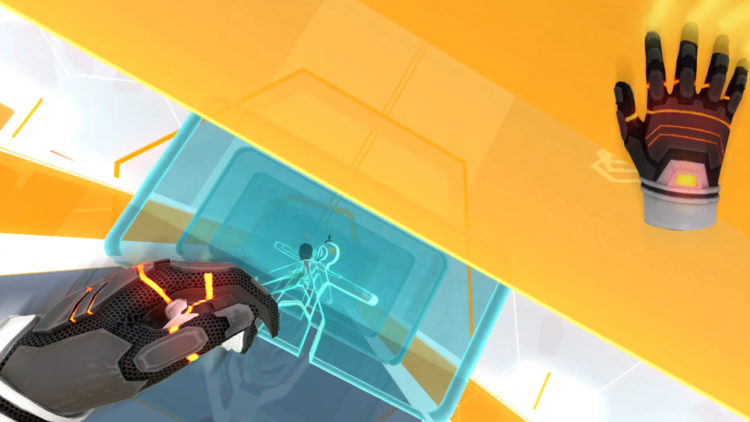
Core and Balance – 7/10
The cutout wall mechanic is capable of making players move and pose in very precise ways, giving it a high potential for immersive, engaging, and dancy gameplay. The twelve OST levels were actually designed in collaboration with professional choreographers which shows, particularly in middle difficulties. These movements use your whole body, including core engagement.
The cutout wall mechanic is also capable of making players move all the way across their playspace and into their real-life furniture in order to avoid in-game obstacles. I often found myself jump diving on one foot from one side of my playspace to the other in order to avoid some of the more challengingly spaced-out walls, pushing my balance to its limits.
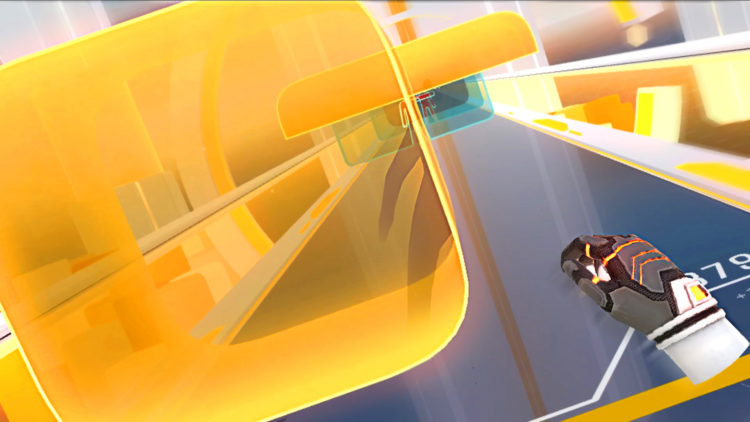
Time Perception –9/10
You know that feeling when you get to the gym early, find an amazing parking spot, kill the engine, and then discover you have left your headphones at home thus sentencing yourself to death by boredom via half an hour of silent cardio? Yeah, the one where you want to cry and go back to bed. There is a reason for that. Music is incredibly efficient at helping us zone out during activity and has been known to increase how long we can work out for. In this way, rhythm games are essentially cheating when it comes to this category.
Levels set to music are immersive and engaging by their very nature and before you know it a half-hour cardio session has gone by in half a dozen songs? That being said, the level design can be straining and bright at times, and in comparison to other rhythm games left me wanting.
Replayability – 9/10
I’m a glutton for community content and the homebrew level editor and robust creator support from developers delivers unto me this delicious sin. The level editor is open-source and available for download here. Got questions on how to use it? The Discord boasts an active community and a place to get your VR dance master questions answered.
For those willing to do the work, the ability to create your own levels adds a tremendous amount of content to the game. Don’t feel bad if you’re not willing, I’m not either. Because of this, we are dependant on community-made levels, and while there are some, it’s not as active as other titles… yet.
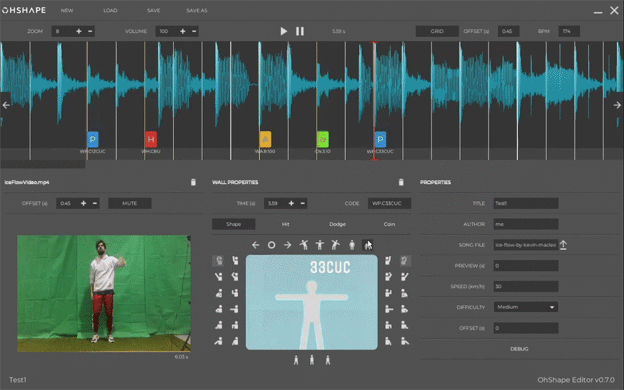
Fitness Scalability – 8/10
There are three native difficulty levels that promise, “Fun for all types of players: No matter your skill, OhShape has a track for every player, from beginners to the Masters of Rhythm.” That said, the later difficulties can be fairly obstacle heavy and arduous to read, leading to misses or inaccurate poses. These mistakes cause your screen to flash a terrible red that blinds you. Being blind exacerbates the difficulty in reading levels and directly results in more errors. This cycle then repeats until the end of time, until you complete the level, or until you fail, whichever comes first. Of this, I was not a fan.
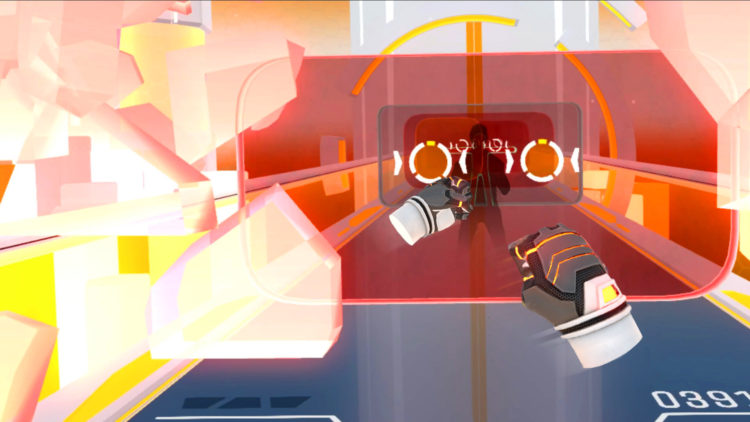
Another already covered but important scalability factor is the open-sourced level editor enabling additional, community crafted content. Wearing light wrist or ankle weights also seems relatively safe on the earlier difficulties or once you find you have memorized the dances and don’t have to position yourself as urgently.
Lack of Nausea – 7/10
I felt a teeny bit dizzy when I first started playing; however, I’m uncertain if this was due to motion sickness and movement issues or anxiety about the walls propelling themselves in my direction with no indication of slowing. Otherwise, I felt great and the performance was refreshingly smooth and untaxing for a VR title.
Social Competition – 9/10
OhShape has this category figured out. There are in-game leaderboards that you can use to compete with players from all over the world as well as party mode to compete with friends. Not only that, but the community is active and grassroots competitions and events are common.
VRFI Fit Score – 8/10
The Good
OhShape is a fun, fast-paced, rhythm game with fantastic fitness potential. The wall mechanics—both cutout poses and overlapping walls that must be avoided completely—combine with punch obstacles to provide a comprehensive range of movement potential. This potential shows in the 12 OST levels carefully crafted by choreographers to feel immersive and naturally dancey. Regular content updates are a thing and community content is also possible with a native, open-sourced, mapping tool. Lastly, the OhShape community is healthy and growing larger every day.
The Bad
OhShape will be too fast-paced for some. Levels quickly become overwhelmingly complex and physically demanding, especially for those with physical limitations. For those with smaller playspaces, the wall dodging mechanics will require too much movement. The potential for injury also rises as levels require more frequent, farther, and faster dodging, punching, squatting and flinging of your body. Those with any sort of physical limitation—physical disability, limited mobility, or small playspace—may feel left out.
OhShape is available on Steam, Oculus Rift, and Oculus Quest. MSRP: $19.99 USD.
Works Cited
[1] “Ever play ‘Human Tetris’,” 10 02 2017. [Online]. Available: https://www.ntd.com/hole-in-the-wall_33858.html.

